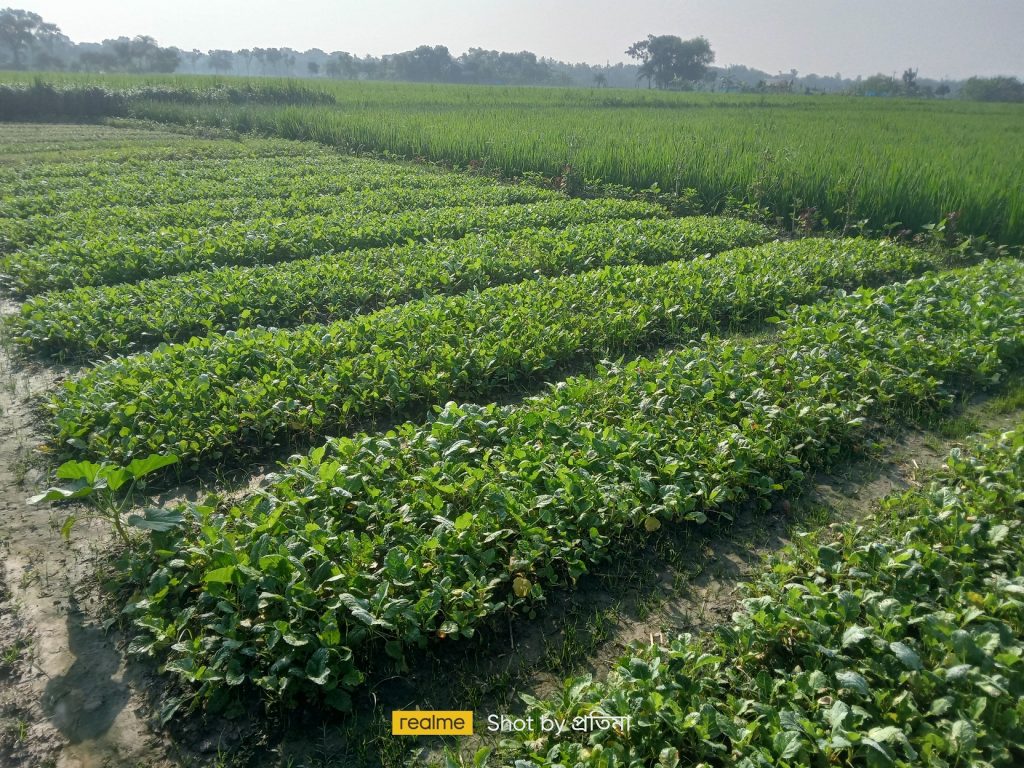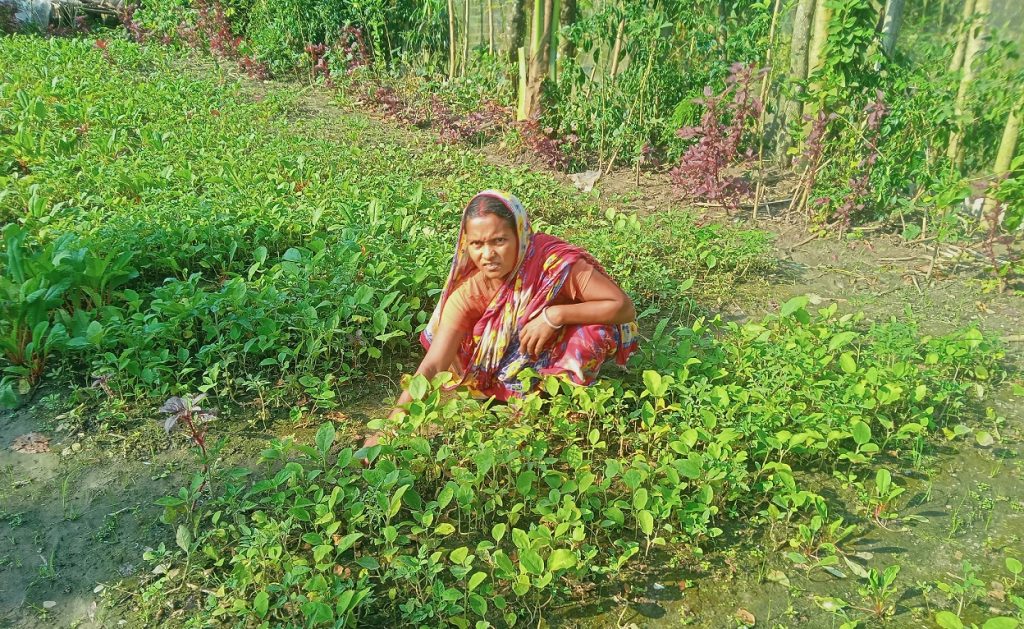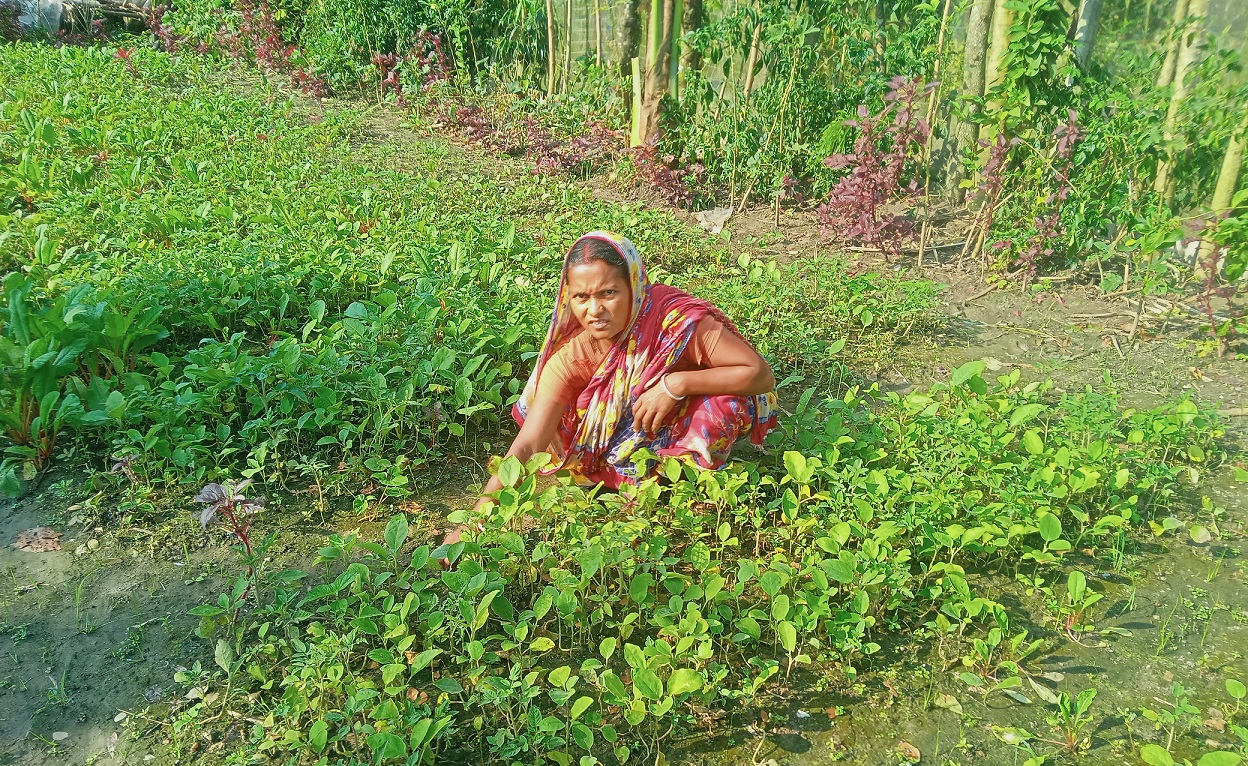By Protima Rani from Shyamnagar, Satkhira
In the disaster-prone coastal belt of southwestern Bangladesh, many families struggle to survive amid rising salinity, floods, and storms. But despite these challenges, some individuals are turning adversity into opportunity by holding on to agriculture and traditional knowledge. One such inspiring figure is Parul Rani Mondal, a 36-year-old female farmer from Sonamugari village in Shyamnagar, Satkhira.
Parul has transformed her 10-katha homestead into a vibrant and biodiverse mini-farm, now known in the area as the “Seedling House.” With only one bigha of cropland, she grows and sells seasonal vegetable seedlings like bottle gourd, pumpkin, bitter gourd, chili, cabbage, eggplant, tomato, spinach, radish, beet, and papaya throughout the year.

Parul also conserves and grows over 100 yam plants annually, storing the seeds in ash-filled pits for replanting. She produces her seedlings entirely using organic methods, which makes them more flavorful and highly demanded in the market. A nearby freshwater pond ensures water supply throughout the year.
Beyond vegetables, she raises 8 goats, 10 ducks, 5 local chickens, and 3 cows, creating a diversified homestead economy.
Since joining BARCIK in 2024, Parul has learned to produce her own seeds, reducing dependency on markets. She now conserves seeds of gourd, cucumber, brinjal, chili, and tomato at home, saving money while gaining control over her inputs. She said, “I never leave any space empty. I plant something everywhere. Whatever we need, I grow it in my yard. We meet our family’s food needs and earn by selling the surplus.”

Her husband and son actively support her work. Her son Sourav even sells the seedlings at local markets. “Now, we don’t need to buy vegetables from the market at all,” she adds.
Parul’s initiative is more than a livelihood. It is can be called a model of resilience and sustainability. Her homestead is rich in uncultivated green plants, often harvested by neighbors for nutrition or cultural occasions.
Parul Rani’s agricultural model shows how rural women can lead the way in ensuring local food security, seed sovereignty, and biodiversity conservation. Her work deserves greater recognition and support from both government and non-government sectors.

